St. Etheldreda (Aethelthryth, Audrey) is the most venerated English female saint. The main sources of her life are the Venerable Bede of Jarrow who speaks about Etheldreda in his History of the English Church and People, Abbot Aelfric of Eynsham who wrote about her in the late tenth century, and Goscelin who composed her Life in 1082. There were accounts of her life in Old and Middle English, Latin and even Old French. Apart from this, there are numerous annals, chronicles (including the chronicle of Ely Cathedral) and early calendars which mention her.
The future saint was born early in the 630s in the kingdom of East Anglia and was a daughter of the pious King Anna, who ruled from 634 till 654. Her birthplace was probably in Exning which is now a village in the county of Suffolk. Her father, King Anna, was responsible for the spread of Orthodoxy and formation of Church life in his kingdom (East Anglia comprised Norfolk, Suffolk and eastern parts of Cambridgeshire). Under his influence the rulers of the kingdoms of Wessex and Essex converted to Orthodoxy and were baptized; through his holy children this influence stretched even to Northumbria, Mercia and Kent. King Anna is first of all notable for his six devout children, all of whom are listed among the saints. These were:
St. Jurmin (either his son or nephew; slain by pagans in 654; feast: February 23); St. Sethrid (+ 660, she moved to Gaul where she became Abbess of Faremoutiers-en-Brie; feast: January 10); St. Ethelburgh (+ 664, became abbess of the same monastery in Gaul, feast: July 7); St. Sexburga (+ c. 700, married the King of Kent, becoming a mother to two other saints, founded the Monastery of Minster-in-Sheppey in Kent and eventually served as Abbess of Ely; feast: July 6); St. Etheldreda—the greatest of them; and St Withburgh (+ c. 743, an anchoress in Holkham and foundress of East Dereham Convent in Norfolk).
Little is known of St. Etheldreda’s early years. Possibly in her youth her spiritual mentor was the saintly Bishop Felix who had come from Burgundy as a missionary and became the Apostle of the East Angles. She led a holy life and made a vow of chastity at a very young age. She entrusted her life to the hands of God and patiently waited for the time when she would become a nun. In 652 she had to marry Tondberht, ealdorman of the south Gyrwas in the Fens region. The saint received from him as a dowry the Isle of Ely (at that time, Elge) on the border of East Anglia in present-day Cambridgeshire. The name “Elge” means “the district of eels” because many eels inhabited that fenland region. Some researchers believe that the Lord predestined a great future for this place from the beginning.
Although she married, St. Etheldreda remained a virgin. Her husband respected her celibacy and died in 655, after three years of marriage. Nearly at the same time the heroic king Anna, father of Etheldreda, was killed by the pagan king Penda of Mercia. For the following five years St. Etheldreda retired to the Isle of Ely where she lived as an ascetic and anchoress amid the ruins of an old church, devoting most of her time to prayer. But the time for her to become a nun was still not ripe.
In 660, for political reasons Etheldreda had to marry again—this time to Egfrith, the young king of Deira and (from 670) of Northumbria, who was then fifteen years old and much younger than her. Thus Etheldreda became Queen of Northumbria. This marriage was aimed at strengthening relationships between the kingdoms of East Anglia and Northumbria. The saint treated him as a son or a younger brother rather than a husband. She taught him the Word of God, helped him grow spiritually and live in piety. Egfrith admired Etheldreda and regarded her as a saint; he learned wisdom from her and helped her in her works of mercy. Etheldreda, as ever, devoted her energies to the service of Christ. She communicated often with the clergy, inviting the most learned and godly priests and bishops to the court.
Among them were St. Cuthbert of Lindisfarne, “the Wonderworker of all England”, and St. Wilfrid of York, “the Apostle of Sussex”—her close friend and spiritual mentor. It was Queen Etheldreda who helped St. Wilfrid found his famous Hexham Monastery in Northumbria by donating lands and it was she who helped him to bring the Good News of Christ to the Kingdom of South Saxons—the last early English kingdom to become Christian. Etheldreda was a generous benefactor also to the monastery ruled by St. Cuthbert; she embroidered for Cuthbert a stole and liturgical cuffs with great craftsmanship. She also visited the Monastery of Whitby high on a cliff in Northumbria, ruled by her illustrious relative St. Hilda. Twelve years passed.
King Egfrith was no more a boy, but a man, and his former attachment and admiration for Etheldreda grew into love. So he began to demand that their marriage be consummated. The saint avoided it. She enlisted the support of St. Wilfrid of York. The king wanted to bribe the bishop, but in vain. In 672 St. Etheldreda fled from her husband to Coldingham—another monastery situated high on a cliff in Northumbria (now across the border with Scotland) which was ruled by her husband’s aunt, St. Ebbe. There Etheldreda spent a year and it was there that St. Wilfrid tonsured her a nun. (Egfrith soon remarried and St. Wilfrid was consequently expelled from Northumbria).
Fearing that the husband would come and take her by force, in 673 Etheldreda left Coldingham monastery disguised as a beggar accompanied by two nuns and went south. During their journey the Lord assisted them by performing miracles. Some scenes from those miracles are depicted in sculptures and stained glass windows in English cathedrals to this day. Here are some of those miracles:
King Egfrith ordered his soldiers to bring Etheldreda back home. On the first day the soldiers nearly caught the fugitives, but the virgin hid on the promontory of Colbert’s Head. Suddenly a strong tide appeared which cut the promontory off the coast and barred the pursuers’ way. Egfrith decided to wait for the water to subside, but it did not subside for seven days; Etheldreda and her companions spent all that time in prayer. Only then did Egfrith understand that the Lord Himself was helping Etheldreda and it pleased Him that she be among holy nuns; so he stopped pursuing her and agreed to annul their marriage.
According to tradition, during their journey a holy spring gushed forth by Etheldreda’s feet through her prayers.
One day the weather was very hot. Etheldreda felt that she was very exhausted. There was no shelter to hide from the sun. The saint stuck her staff to the ground and lay down in the boiling sun. When she woke up she noticed that the staff had turned into a mighty green tree.
The sisters walked day and night and at last reached the Isle of Ely, so dear to Etheldreda’s heart. The soil there was fertile and it could provide food for up to 600 families. The marshes that surrounded it served as an effective protection. In the same year Etheldreda founded a double monastery there with communities for monks and nuns, who lived separately but prayed together in the common church. At that time such monasteries existed in Whitby, Coldingham—mentioned above—and in many other places. Etheldreda became the first Abbess of Ely. The monastery was situated on the site of the present Ely Cathedral. Prayer, taking Communion, meekness and charity were the most essential elements of the Christian life for Etheldreda.
Abbess Etheldreda gave up wearing garments of thin linen cloth and wore only those of woolen cloth. At that time in England it was the custom to take hot baths, but Etheldreda despite her royal origins preferred to bathe only in cold water, allowing herself hot water only on the feasts of Easter, Pentecost and the Baptism of the Lord. But even on these festivals she showed true humility and used the water left after other sisters. The holy woman ate only once a day and kept this rule throughout the year, breaking it only during illness or on great festivals. Very often she stayed up for the whole night, fervently praying in church on her knees right till the morning. She lived very modestly and in solitude. Many of her friends, relatives and former courtiers followed her example and chose the path of monasticism and service to God. Some of them remained at her monastery or entrusted their daughters to her loving care. Many of the faithful and even clergy flocked to her for advice and asked her to become their spiritual mother. St. Etheldreda’s confessor at the monastery was the saintly hieromonk Huna (+ c. 690, feast: February 13) who later lived as a hermit near Chatteris in Cambridgeshire.
St. Etheldreda died of the plague on June 23 (according to the old calendar) 679 after some six years as abbess. Shortly before her repose a large tumor appeared on her neck which was very painful. The saint bore the pain with humility and explained it as Divine punishment for her pride in her young years when she used to wear luxurious necklaces. The monastery doctor removed her tumor, the pain disappeared but several days later all returned again. According to tradition, St. Etheldreda had the gift of prophecy. Thus, she predicted the coming of the plague beforehand and foretold that she would die from this plague. St. Etheldreda’s sister, St. Sexburga, became her successor as Abbess of Ely. Sixteen years passed.
In 695 Sexburga decided to exhume her sister’s body from the grave. To the great amazement of Sexburga and everybody who was present at the ceremony, the relics of St. Etheldreda appeared to be absolutely incorrupt. More than that, the scar from the tumor had completely disappeared. The saint’s face looked fresh and young. The linen cloth in which her body was wrapped remained absolutely intact as well. The holy body of the abbess was laid in a marble coffin of Roman work with a stone lid that had been miraculously found by the brethren at Grantchester and perfectly fitted her. On October 17, 696, the relics of Etheldreda were solemnly translated into the monastery church for veneration. Numerous miracles occurred through her intercession.
People received help not only at her shrine with the relics, but also from her linen cloth (mentioned above) and the wooden coffin from her grave. Among those healed were many demoniacs, sufferers from headache, from throat and neck diseases, blindness and poor sight. Very rapidly she became one of the most celebrated early English saints: a virgin, a queen, an anchoress, an abbess and mentor, a wonderworker. The Venerable Bede half a century after the saint’s death composed a special hymn in praise of virginity which was dedicated to Etheldreda.
Pilgrims came to venerate St. Etheldreda’s shrine at Ely throughout the Middle Ages. No fewer than thirteen ancient churches were dedicated to her in various regions of England. The double monastery founded by Etheldreda was ravaged by the Danes in 870 and was restored exactly one hundred years later by the holy right-Believing King Edgar the Peaceful and the holy Bishop Ethelwold of Winchester as a monastery for men. Monastic life there prospered for many centuries, and at one time Ely became the largest and wealthiest monastic community in the whole country after Glastonbury. Early in the eleventh century the town of Ely was famous for the school of embroidery and the making of necklaces, under the protection of King Canute and Queen Emma.
After the Norman Conquest, Ely for a time became the center of national resistance to the invading Normans—St. Etheldreda thus remained a uniting and inspiring figure of the English nation against occupants. She remained such until the Reformation. There were many recorded cases of miracles of St. Etheldreda protecting her people, her monastery and town from disasters and enemies of all kinds. Soon common folk began to call St. Etheldreda by her short name Audrey. This became one of the most popular female names in England and it is still a baptismal name for girls in England and several other countries. Interestingly, a word in the English language owes its origin to our saint. Some 500 years ago there used to be a St. Audrey's Fair in Ely where fashionable necklaces of silk and lace were sold; they were called “tawdry laces”—a corruption of “Audrey’s laces”. But they were often of such poor quality that the word “tawdry” derived its modern meaning; that is, something cheap and showing lack of taste.
The building of a Norman monastery at Ely began in about 1081. The edifice became known as an excellent example of the Romanesque style. Early in the twelfth century Ely became an episcopal see—the status it retains to this day. In 1106 a translation of the relics of four great Ely saints—Etheldreda, Sexburga, Ermengild and Withburgh took place and the relics of Sts. Etheldreda and Withburgh appeared to be absolutely incorrupt. Another translation of St. Etheldreda’s relics took place in 1252 when the cathedral was consecrated—it was dedicated to St. Peter and St. Etheldreda. Ely Cathedral is mentioned in many works of English literature. Thus, in the play The Winter’s Tale by William Shakespeare the shepherd promises the shepherdess Mopsa to bring her lace from Ely.
In 1531 the Bishop of Ely arranged a sumptuous reception for King Henry VIII and his first wife Catherine of Aragon. The feast lasted five days, but it was clouded because the king and the queen dined in separate rooms. It was the first sign that Henry was going to divorce… Soon the Reformation followed. The bloody reformers looted Ely Cathedral’s treasures and jewels. The shrines of all its saints, including St. Etheldreda, were destroyed, and their relics burned, dozens of its unique sculptures were decapitated or smashed. However, some relics of St. Etheldreda did survive.
Ely Monastery ceased to exist and since that time it has been used as an Anglican Cathedral. Etheldreda is usually represented in art as an abbess, crowned, with a pastoral staff and a book in her hands, with two does, sleeping under a blossoming tree, holding a model of Ely Monastery, expelling the devil, with a book and a lily, with a spring gushing at her feet. To this day some English Christians venerate St. Etheldreda as a protectress of chastity, widows, healer of throat diseases as well as the patroness of Cambridge University. Now let us talk about the surviving ancient shrines associated with St. Etheldreda.
St. Etheldreda’s Church in Ely Place, Holborn, London. Holborn is situated close to the center of London and is one of the capital’s oldest streets. It derived its name from a river that once flowed there. Court officers, jewelers and others settled in Holborn, but the most famous is Charles Dickens who described the area in his novels. Holborn has many architectural monuments, but its real gem is St. Etheldreda’s Church in Ely Place which is the oldest Catholic building in Britain now in use and one of only two surviving London buildings dating back to Edward I. The church consists of an upper chapel and the crypt or lower chapel. The church was built in 1250-1290 and for centuries was part of the complex of the palace of the Bishops of Ely in London.
William Shakespeare mentions this palace in his plays Richard II and Richard III. Beautiful orchards and vineyards were located near. The bishops distributed food to 400 poor people every day. In 1534, by order of Henry VIII, the chapel in Holborn was closed. Catholic services were prohibited in England till 1829. For some while the chapel was used as a tavern, and after the Civil War – as a prison and hospital. In the 1620s it was given to the Spanish ambassador and Catholic masses resumed, but only for two years. A miracle occurred in 1666 during the Great Fire of London: when the fire approached the church of St. Etheldreda, the wind changed direction and the church remained intact.
In the 1770s the church was restored in the Georgian style and used for Anglican worship. In the 1820s the church was transferred to an Irish community and later to Welsh Anglicans. Finally, in 1874 the church was purchased by a Catholic priest of the Rosminian order, its original appearance was restored by the architect George Gilbert Scott and Catholic services resumed. With time part of the hand relic of St. Etheldreda was given to the church and it is kept there to this day in a jeweled casket in the niche of the eastern wall, to the right of the high altar.
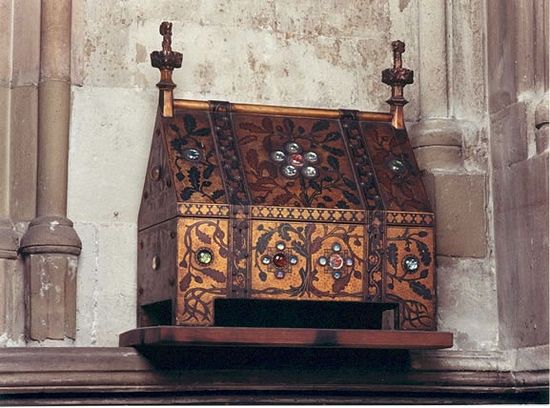 The reliquary containing a small portion of St. Etheldreda's relics, kept at St. Etheldreda's Church in Ely Place, London
The reliquary containing a small portion of St. Etheldreda's relics, kept at St. Etheldreda's Church in Ely Place, London During the Blitz in 1941 the church roof was damaged and Victorian stained glass destroyed, but the church was restored rapidly. This wonderful church with its history and atmosphere is very fine both inside and out. It is the only church in London which has the relics of an ancient national saint. Apart from the saint’s relics the following monuments are in this church: statues of Catholic martyrs who suffered under Henry VIII and Elizabeth I; the great east window (probably the largest stained glass in London and depicting the Holy Trinity, Mary with Joseph, angels, the Evangelists, the Last Supper, Sts. Etheldreda and Brigid); the west window; the statue of Etheldreda above her relics.
The Catholic Church of St. Etheldreda in Ely. This church is just over one hundred years old. It is situated not far from the Cathedral. This church houses one of the most precious surviving relics of the early English Church: the incorrupt left hand of St. Etheldreda. The fact is that a portion of the saint’s relics was separated from the main body long before the Reformation and kept elsewhere (Durham, York, Salisbury Cathedrals, Glastonbury Abbey all claimed parts of her relics). In 1811 this relic was discovered in a farmhouse near the town of Arundel in West Sussex which was a hiding place for a recusant Catholic family; the relic had been carefully preserved by family members for years. That part of Sussex was a center of Catholic resistance to the established Church. The hand was found on a silver plate of the tenth-century style with an inscription indicating what a relic it is and to whom it belongs. Later the relic was transferred to the estate of the Duke of Norfolk and then to Dominican Sisters at Stone in Staffordshire.
In 1953 the relic was given to the Catholic church of Ely where it can be venerated by pilgrims (a piece of the hand was also donated to St. Etheldreda’s Catholic Church in Ely Place, London). According to an earlier description, the hand was of white color with perfectly-preserved skin and fingers. Not long ago it was reported that the color turned to brown due to air conditions but the hand is still practically intact. It is housed in a glass reliquary inside the church and a modern statue of the saint is nearby. The stained glass window behind the high altar depicts St. Wilfrid, the Mother of God and St. Etheldreda. The church is a destination for pilgrimages.
The Holy Trinity Ely Cathedral. The magnificent tall Ely Cathedral dominates the town of Ely and its surroundings. It is locally nicknamed “the ship of the Fens”. Ely ceased to be an isle long ago; all the marshes were drained, though the site is still rather isolated. The sense of holiness is present there. The Cathedral dates mainly to the twelfth century. Both the Cathedral exterior and interior are light and elegant. Its length is 164 meters (537 feet) making it one of the longest English cathedrals. Unfortunately, it houses no saints’ relics as all of them were destroyed under Henry VIII.In fact the last abbot and the brethren of Ely Monastery were sympathetic to the ideas of the Reformation, as was Bishop Thomas Goodrich, whose grave (by irony) survives in the Cathedral to this day undamaged. It was he who issued the main Reformation decree which said that all the images, relics, monuments of miracles, and shrines must be totally demolished so that no traces or memory of them should be found for the future. However, several interesting monuments inside the Cathedral can nevertheless be found. A stone of black marble at the presbytery—between the high altar and the choir—marks the site of the former shrine of St. Etheldreda. An inscription reads: “Here stood the shrine of Etheldreda, saint and queen, who founded this house 673 A.D.”.
The south aisle contains a memorial to another saint—St. Owin (Owen) of Lichfield (+ c. 680, feast: March 4). He was a faithful steward of St. Etheldreda when she was a queen. Later he became a simple monk and disciple of St. Chad of Lichfield. This eighth-century Cathedral’s oldest monument is called “the Owin stone”; it is the base of a memorial cross in honor of this saint. The inscription here reads: “To Owin give Thy light, O Lord, and rest, amen.”
There is a more recent chapel of St. Etheldreda with her statue at the east end of the Cathedral, beneath the great east window. The impressive fourteenth-century lantern tower of the Cathedral uniquely has windows on all sides (another and the higher tower in the Cathedral is the west tower). The Lady Chapel is the largest in England. It is also very bright due to its huge windows and contains a large number of fine fourteenth-century statues. Off the south aisle is the ancient prior’s door which has a rare twelfth-century carving of Christ in Majesty. The cathedral has sculptures depicting scenes from the life of St. Etheldreda, many Victorian stained glass windows, St. Edmund’s Chapel with a depiction of his martyrdom, the modern Chapel of Sts. Ethelwold and Dunstan used for quiet prayer and many other treasures. Near the entrance to the Cathedral there is a stained glass museum which displays examples of stained glass from the thirteenth century to present day. The Cathedral is visited by tens of thousands of pilgrims annually.
Among Anglican parish churches dedicated to St. Etheldreda let us mention the following: St. Etheldreda’s Church in the village of Guilsborough in Northamptonshire (the church is Norman with some traces of the Saxon period; it may have been founded by St. Wilfrid to whom it was originally dedicated, but has been unusually rededicated in honor of his spiritual friend St. Etheldreda since then—both saints are depicted on a stained glass window there); the twelfth-century St. Etheldreda’s Church in the village of Horley near the town of Banbury in Oxfordshire; St. Etheldreda’s Church in Fulham, Greater London; the Church of St. Etheldreda in the village of Hatfield near the town with the same name in Hertfordshire (it is of the thirteenth century though a church may have existed here earlier; a palace and residence of Bishops of Ely was once located nearby); the late seventeenth-century Church of St. Etheldreda in the village of West Halton near the Humber estuary in Lincolnshire; the pretty Church of St. Etheldreda of pre-Norman origin in the hamlet of White Notley in Essex (some of its fabric is Roman; a window depicting the saint is medieval); the Church of Sts. Philip and Etheldreda in Exning in Suffolk at the saint’s supposed birthplace (this was the chapel attached to an old workhouse—the only surviving workhouse chapel in Suffolk); the Church of St. Etheldreda in the village of Hyssington in the Welsh county of Powys near the Shropshire border (it is of Saxon origin). Formerly there used to be churches of St. Etheldreda in the city of Norwich in Norfolk (now redundant) and in the village of Queen Adelaide in Cambridgeshire.
There are Catholic churches in honour of Our Lady and St. Etheldreda in Newmarket in Suffolk, in honor of Sts. Joseph and Etheldreda in Rugeley in Staffordshire and others. St. Etheldreda is commemorated on stained glass, in sculptures, carvings, effigies, and statues in many churches and cathedrals across England. Her icons can be found in Orthodox parishes.
Holy Mother Etheldreda, pray to God for us!

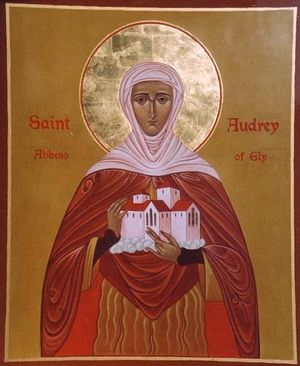
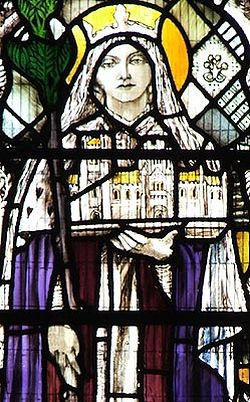
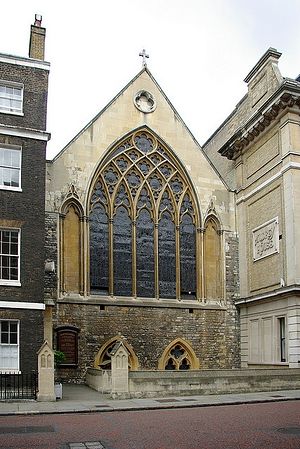
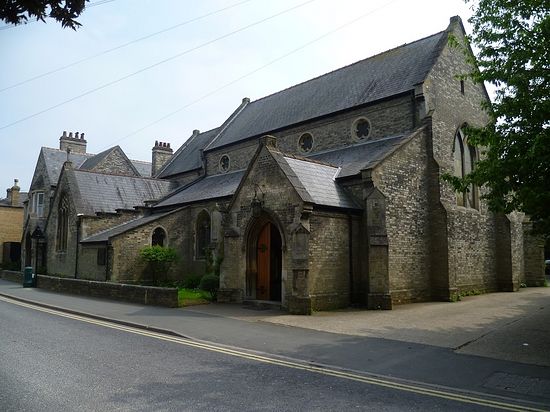
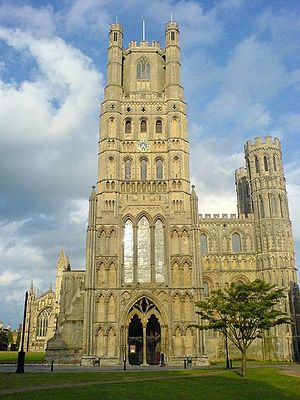
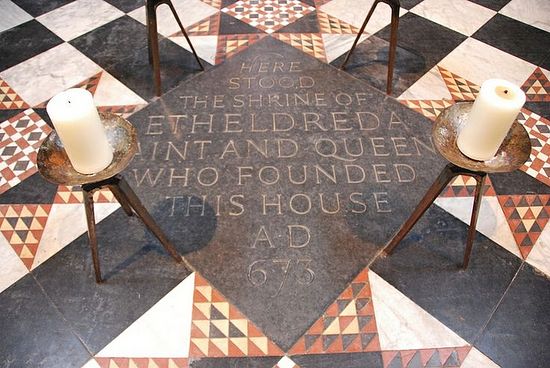
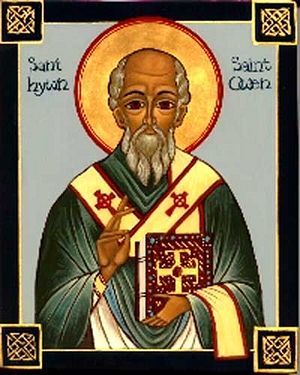
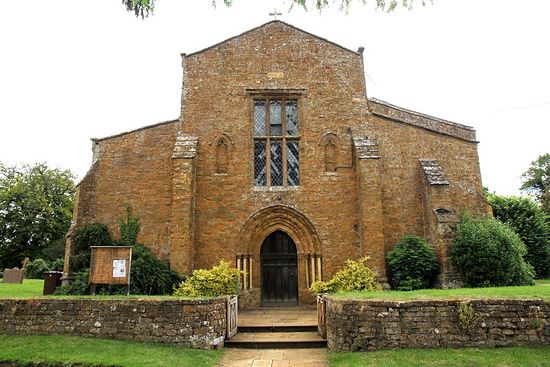
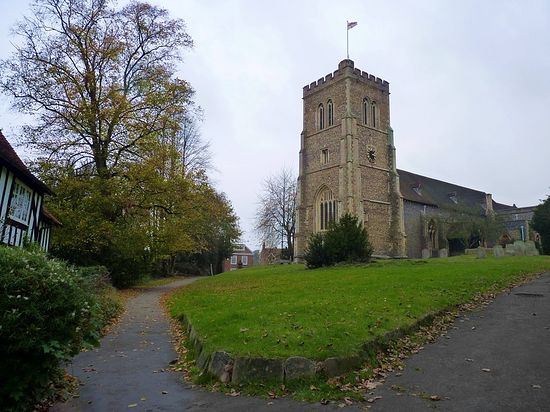
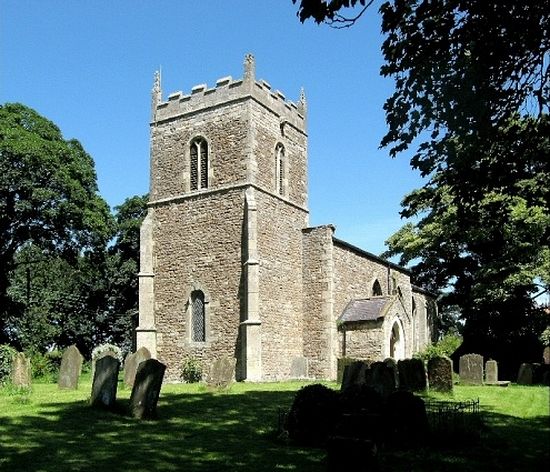
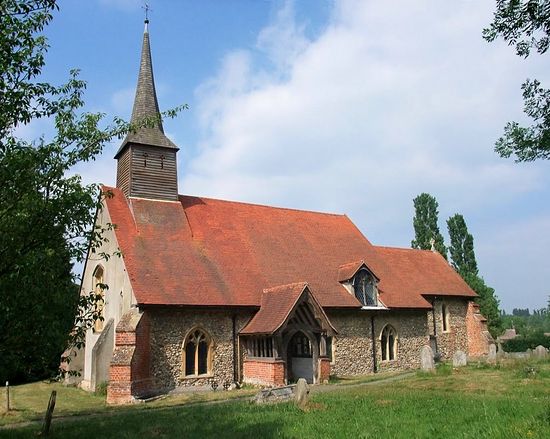
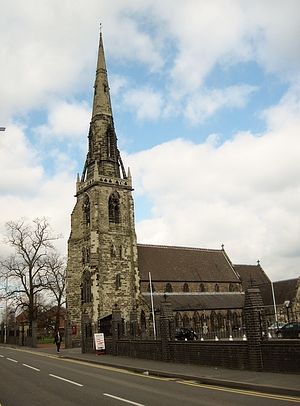
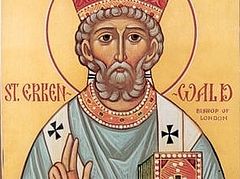
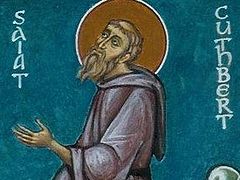
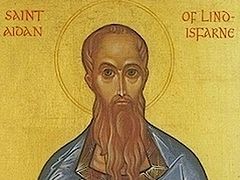
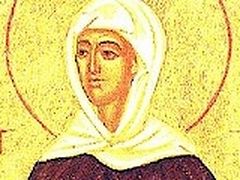
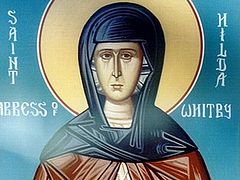
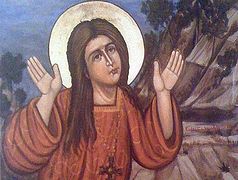
Many thanks for this additional info! Frankly, I didn't even try to list all the churches in honour of St Etheldreda here because there are so many of them! Another relic of note is the 13th-century St Etheldreda's image on the oldest surviving wooden Rood Screen in England at St Michael's Church in Stanton Harcourt, Oxon (in front of the chancel). The image is in considerably good condition in spite of its age. The role of such screens in medieval churches was roughly equivalent to our iconostases in Orthodox churches. I visited this church in 2012, it also has the base of the shrine of St Edburga of Bicester.